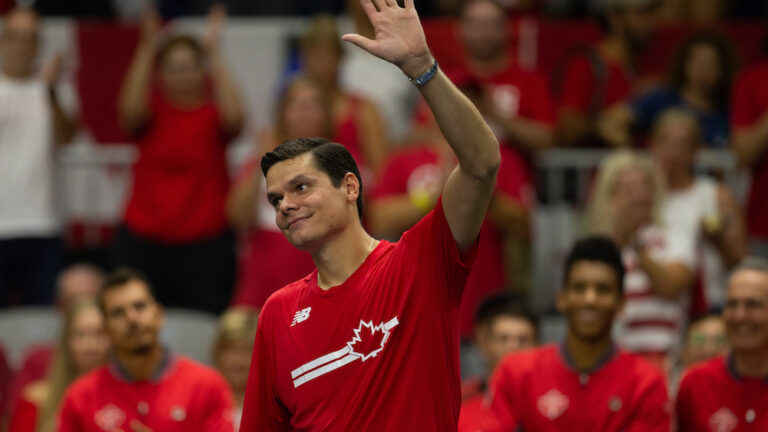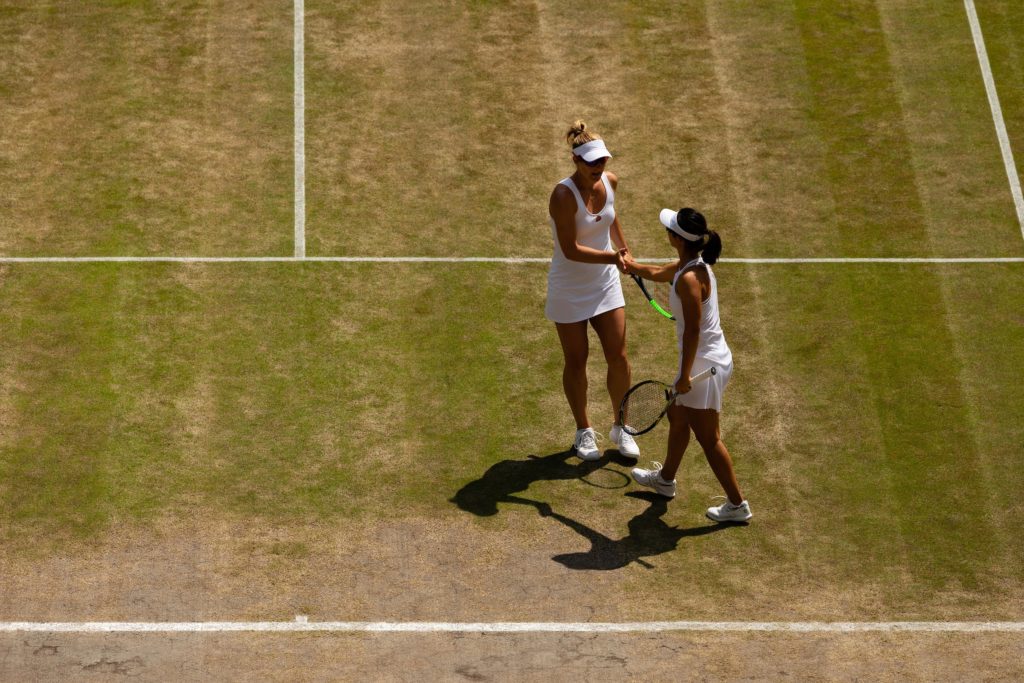
Photo : Mauricio
Prestigious. Mythical. Alluring. Green.
Let’s kick things off with a quick tour of the perfection that is the All England Lawn Tennis Club in the quaint London suburb of Wimbledon. Swoonworthy.
All the high praise is wholly deserved. Every player and fan dreams of setting foot on Centre Court, myself included.
My wish came true during the 2012 Olympics. I snapped pics of Henman Hill, where I watched Andy get the better of Roger, and got a very, very close look at the famous lawn.

But travel reviews and nostalgia aside, a single existential question remains: how much longer will Wimbledon survive? How much longer will athletes want to play on an ultimately obsolete, I daresay illogical, surface?
Those lush courts on which competitors are photographed when they first arrive at the All England are fleeting: the ideal tournament organizers are able to achieve lasts only a day.
In 2015, USA Today documented the rapid deterioration by comparing the court conditions for Novak Djokovic’s first-round, third-round and semifinal matches.

Some courts, especially the secondary ones, are worse. Depending on the year, the weather and a bunch of other factors, the surface is far more beige than green.
After a few days, much of the area near the baseline looks a lot like a dirt court. Despite all the efforts invested by expert gardeners who work around the clock, a tennis court will never look like a golf course.
I know the purists among you are upset right now, branding me a heretic just for asking the question, but the fact remains that it’s a valid one.
Is it time to retire the grass courts?
Yes, I know, tennis was born on grass. But why do we keep playing on a court that’s uneven and, more importantly, downright dangerous?
How many athletes left the Club with a sore hip after slipping when changing direction? Just ask Milos Raonic about Wimbledon 2011 and one of the most serious injuries he’s ever suffered.

And, as if to confirm this assertion, day two was marked with this type of infamous injuries. Not only Roger Federer’s opponent, Frenchman Adrian Mannarino, had to retire from a match that he might have won, but the superstar of the women’s draw, Serena Williams, saw her tournament end in the first set of her initial round because of this kind of injury. You can’t make that up…
How many sarcastic smiles and disgruntled frowns have there been when players lose a critical point on a weird bounce?
On the surface (!), videos like this one may be good for a few laughs, but when players start hesitating or changing how they move because they’re afraid of falling or getting hurt, the sport itself—and the show—is transformed.
Much of the same also applies to clay, with its myriad of inconveniences, but let’s stick to grass for now.
Over the years, several players have expressed their disdain for the grass courts.
“Grass is just for cows,” proclaimed former No.1 Manuel Santana. Those words, which are often wrongly attributed to Ivan Lendl (who did, indeed, repeat them), were also uttered by Marat Safin, Marcelo Rios, and Jan Kodes. That being said, Kodes still managed, like Santana, to raise the Gentlemen’s Singles Trophy.
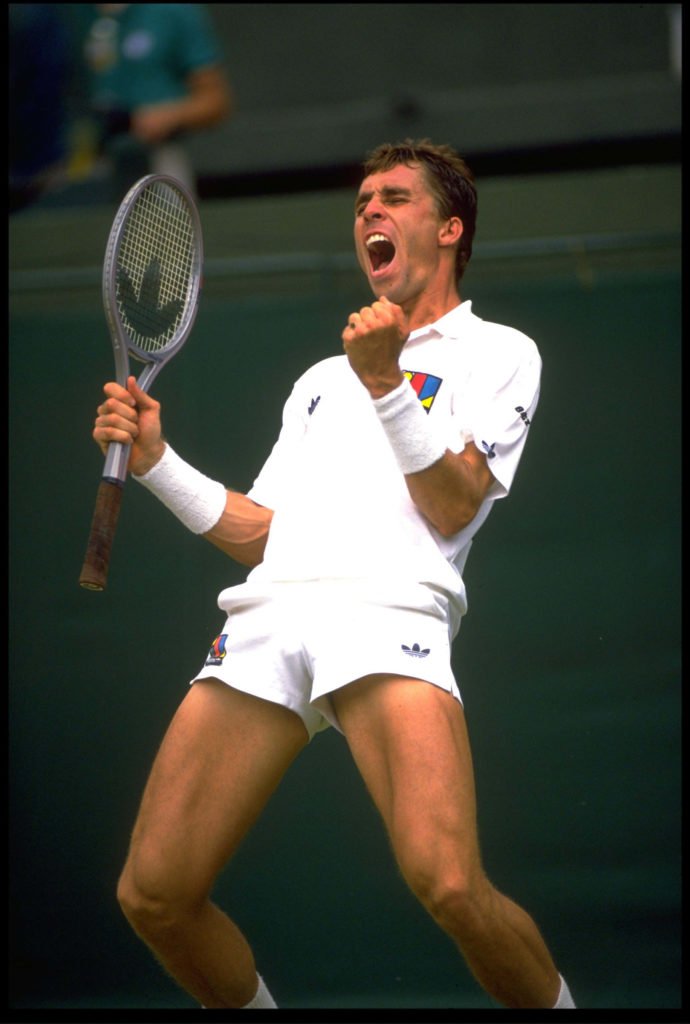
Two years ago, John Williams Devine, a lecturer in sports ethics and integrity at Swansea University, penned this interesting piece about keeping off the grass for the Conversation.
In addition to all his assertions, Devine argues that the sport has evolved. If players have abandoned their narrow wooden racquets, then why are they still being asked to play on such an antiquated surface?
I’d be curious to see the results of an anonymous survey of WTA and ATP players asking them whether they’d like to do away with the grass season.
There are only two periods during which the game isn’t played on hard courts. The first is the eight-week clay court season, which gives players enough time to adapt. The second, on grass, is only three weeks long (two weeks this year because of you-know-what). That’s just too short.
Ahead of Wimbledon, there are only five lead-in events, but there are close to 20 men’s tournaments and 15 women’s competitions on the road to Roland-Garros.
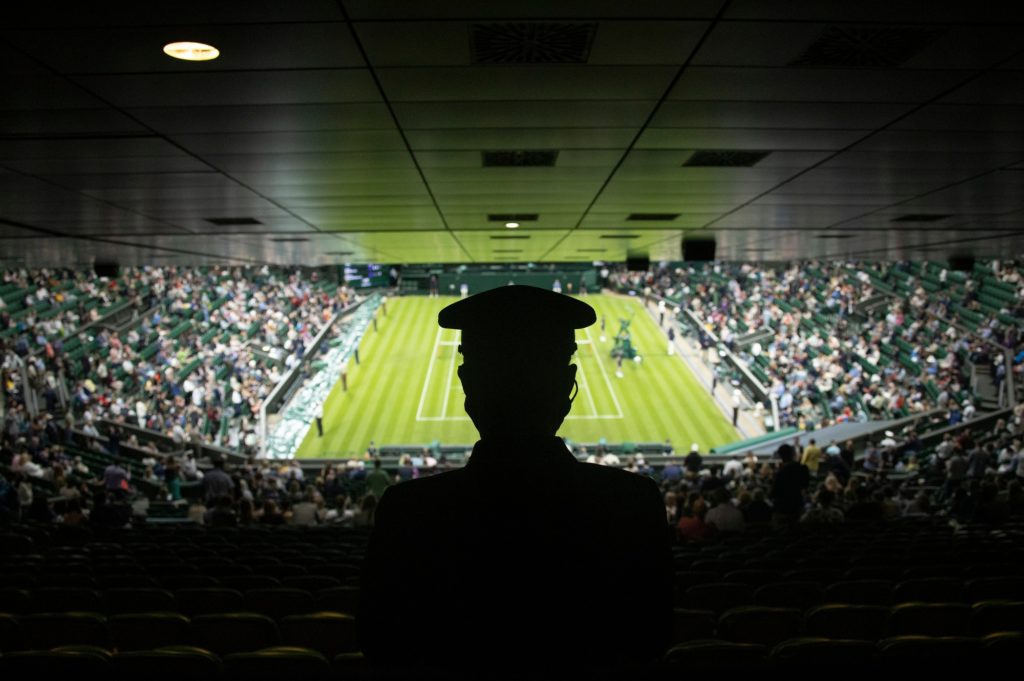
Bringing a tradition to an end isn’t easy, but maybe it’s time to consider it.
What do you think? Let me know in the comments!
On middle Sunday, we play!
Some tennis traditions, like the Wimbledon whites, have withstood the test of time. But for how much longer? In 2021, the tournament ended the custom of middle Sunday—the day of rest at the halfway point.
This year therefore marks the start of a new era in which the Slam will feature matches on all of the 14 days, like every other two-week championships.
Here’s a look back on the middle Sunday tradition of the 24-hour pause.
There were only four years in which middle Sunday didn’t materialize: 1991, 1997, 2004 and 2016. The culprit was rain, which caused the match schedules to fall way behind (on the upside, the grass was greener).
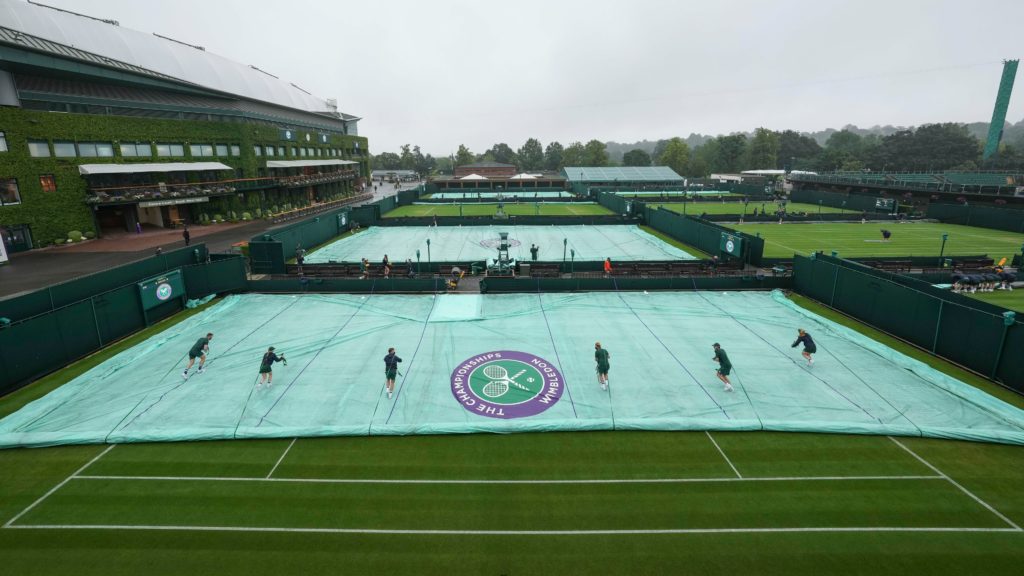
Middle Sunday was instituted following an agreement with the residents of Wimbledon, the small town about 15 kilometres southwest of central London where the All England Lawn Tennis Club is located.
For many years, so as not to disturb the neighborhood’s quiet Sundays, the men’s final was held on the last Saturday. When organizers decided to move the final to the second Sunday, it was also decided that the first Sunday, middle Sunday, would be a day of rest.
Since then (and with the ever-increasing popularity of pro sports and weekend TV sports coverage), the break has quickly become outdated. Especially since none of the other Grand Slams put play on ice for a day.
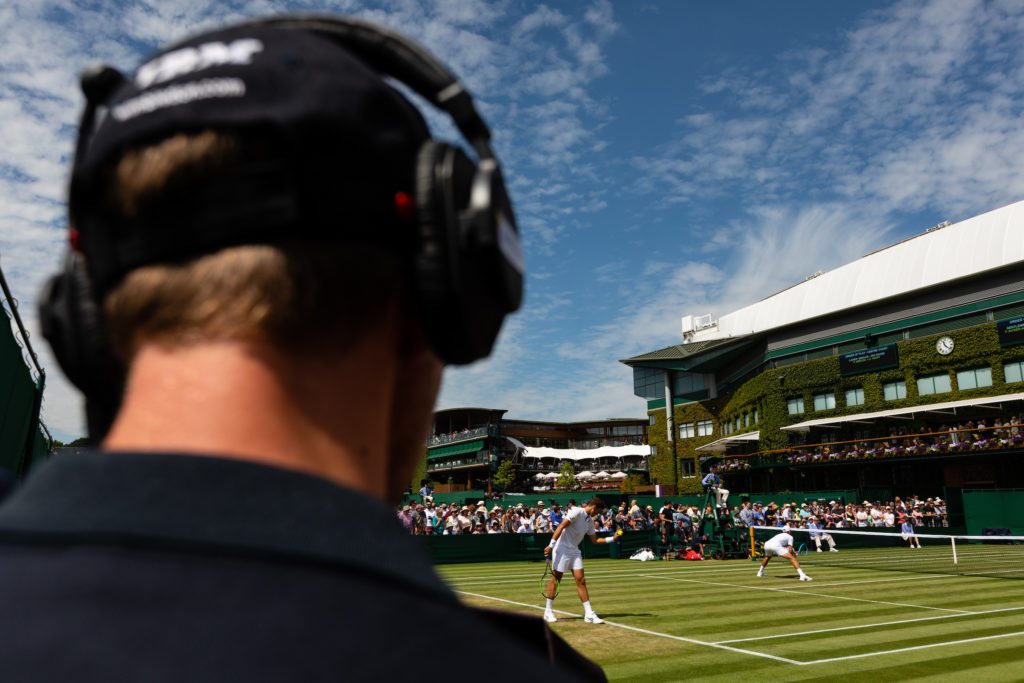
“We want more of this wonderful event to be available to more people around the world to share in the joy of the Championships,” All England Lawn Tennis Club chief executive Sally Bolton explained to the BBC.
Many fans and tennis writers applauded the verdict announced on April 28, even those who may have wanted a day of rest, which should come on a Monday, so fans can catch as many matches as they like while they’re off on Sunday.
Is it perhaps time for Wimbledon to get with the times and start on a Sunday instead of a Monday? Or on a Saturday to make it a 16-day event?
Even the IOC understood this and extended the Olympic Game from 14 to 16 and even 17 days.
Anne White’s whites
The mandatory Wimbledon whites have often given rise to objections, sarcasm and conflicts between competitors and organizers.
Even so, the tournament continues to uphold the tradition that has since disappeared from every other tournament on the planet.
Of all the apparel-related anecdotes, Anne White’s stands out. On one fateful evening in 1985, the American ace walked onto Court No.2 in a white bodysuit—an episode she revisits in a piece entitled “Suitable Attire” in this month’s Racquet magazine.

She also recounts the reasons that motivated her choice.
Nike execs sent her the bodysuit on which she sewed a Pony patch so as not to break her sponsorship agreement. The lycra ensemble was so sheer that she had to wear two, one on top of the other.
In the end, White only played about two thirds of her match in the bodysuit. When play was suspended due to darkness, she was promptly instructed by tournament officials to come back the next day in “more suitable tennis attire”, even though the bodysuit technically met Wimbledon’s strict dress code.
By the next morning, she had made the cover of every newspaper. When the match resumed, White eventually lost in three sets, in a skirt, to Pam Shriver.
Today, White remembers what she’s dubbed her moment of infamy with fondness. She never got back in the bodysuit, but it still followed her around the world on the tour.
In 2018, she was happy to see the style resurrected by none other than Serena Williams at the French Open. When the biggest name in women’s tennis pushed the boundaries, the establishment folded.
The WTA changed the rule to make bodysuits and leggings without a skirt on top totally OK.
And, in tennis at least, no man will tell a woman what she can and can’t wear to work again.
The life of Genie
Eugenie Bouchard, the Canadian champion who had us all glued to our TVs on the final Saturday at Wimbledon 2014, won’t be in the London mix this year.
But she’s far from absent or untraceable. Social media algorithms and a few clicks will take you right to her.
Bouchard is currently recovering from arthroscopic surgery on her shoulder—a procedure she had hoped to avoid with some rest and rehab. When she realized the injury just wasn’t healing, the No.114 made an appointment with her surgeon.
She may not be ready to pick up a racquet just yet, but she can definitely get behind a camera. Last week, she was the special guest on an episode of Kes’ House on Sportsnet. On the show, former NHLer Ryan Kesler invites celebrity guests to his Michigan home to hang out, let loose and play games.
For more on what Genie’s been up to, check out this roundup by our friends at Baseline.
You’ll find also, of course, a few selfies. Of her, her stitches, and much more.
100% Genie-style !
Get in touch with me!
Email: privard@tenniscanada.com
Twitter: @paul6rivard
Follow all our Canadians in action here.


